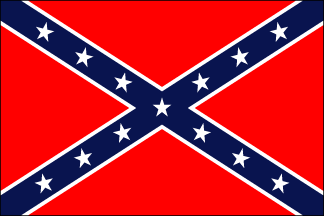Confederate Flag Designed to Send Out Two Messages To Different Audiences Simultaneously
I've begun to lose patience with those continuing to defend the Confederate flag as though we're caught up in an issue of moral, cultural or constitutional complexity. What we're dealing with here is actually rather simple. This flag has a dual function and always has. It is meant to express Southern ethnic pride, among those of European ancestry. At the same time, it is designed to convey a terrorist threat to blacks. "You had better stay in your place or else."
The role of the Confederate flag is not unlike that of the Nazi swastiki. To Germans it meant ethnic pride, while to Jews it signified horror. Even at the end of World War II, most Germans insisted that Nazism did not foment anti-Semitism and that the Jews were safe. It was only after the allied forced initiated what came to be known as a deNazification program and forced German citizens to view photographs of the death camps, that the unspeakable crimes of the Holocaust began to seep through their layers of denial.
So lets stop pretending that we can't for the life of us figure out which side of the Confederate flag debate is valid. It is both an emblem of Southern ethnic pride and a threat to do whatever is necessary to "keep blacks in their place," so that whites can thrive at their expense. Whether the social structure involves slavery or merely discriminatory labor and social practices, this is the unspoken heritage of the South.
This particular Confederate flag design emerged in 1962 to counter the successes of the Civil Rights Movement. It was flown over the state Capitol dome to mark the centennial of the start of the Civil War. According to National Public Radio:
This particular Confederate flag design emerged in 1962 to counter the successes of the Civil Rights Movement. It was flown over the state Capitol dome to mark the centennial of the start of the Civil War. According to National Public Radio:
. . . many saw it as a reaction to the civil-rights movement and school desegregation. For nearly four decades, it continued to be a controversial issue in the Palmetto State. A 1994 nonbinding referendum placed on the GOP primary ballot found that three-in-four voters said the flag should keep flying.

Comments